The Chinese Money Plant, also known as Pilea peperomioides, is the perfect choice. With its distinctive coin-shaped leaves and easy-to-grow nature, this plant is not only a beautiful addition to your home but also believed to bring wealth and abundance, according to Feng Shui.
Native to China, the Chinese Money Plant thrives in partial sun and well-draining soil with a pH range of 6.0 to 7.0. Its bright green, flat leaves grow on long stems, creating a unique and attractive appearance. This compact plant can reach up to 12 inches in height and 12 inches in width, making it suitable for various indoor spaces.
Appearance of Chinese Money Plant
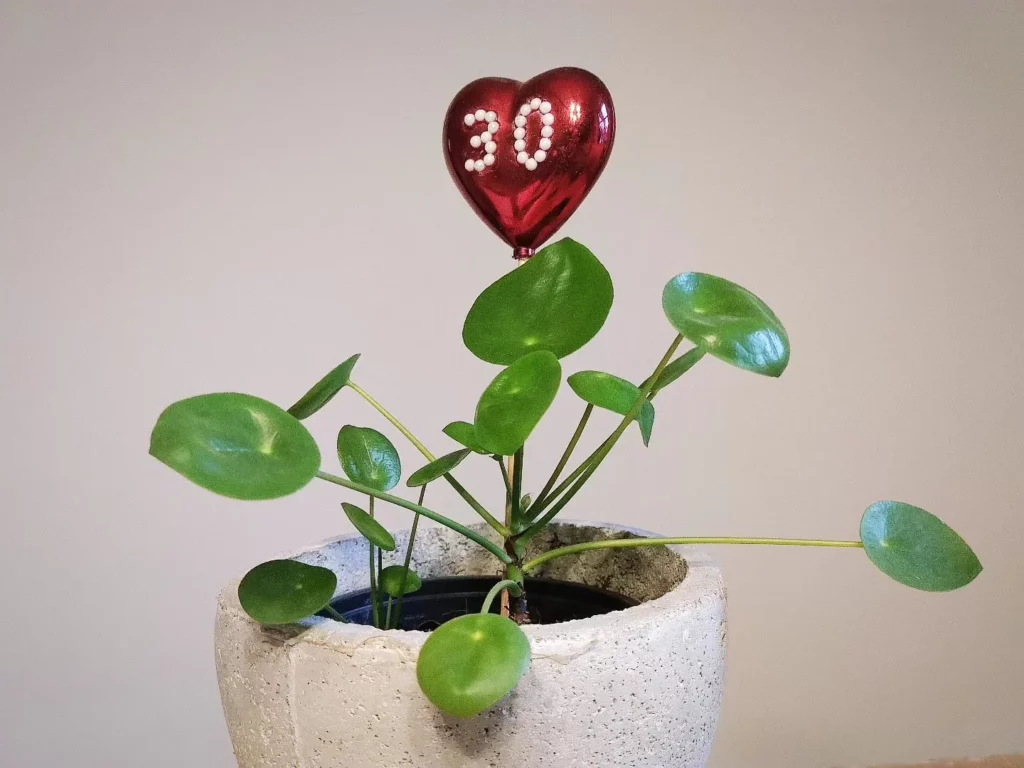

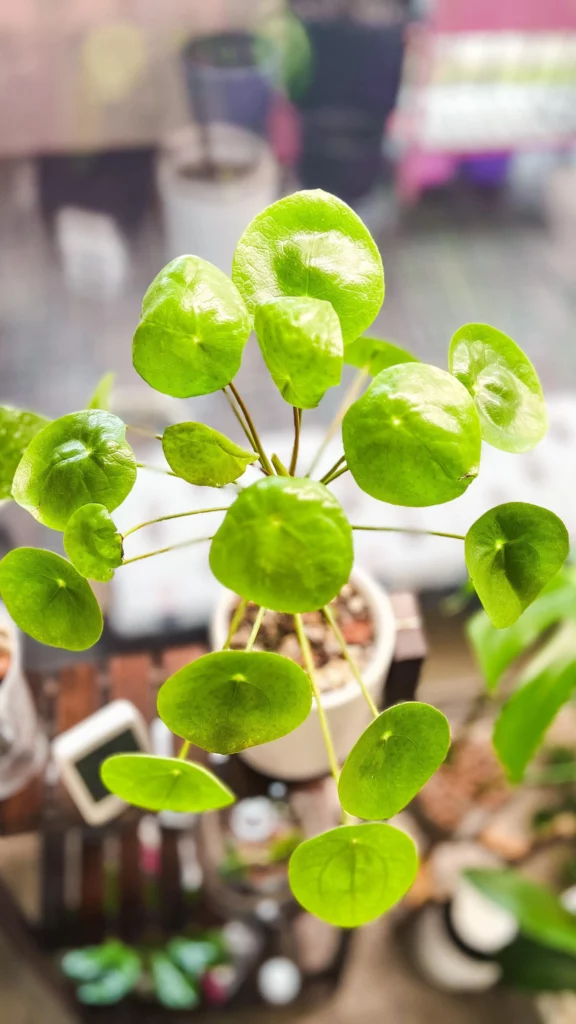
The Chinese money plant, also known as Pilea peperomioides, is visually captivating with its unique appearance.
The plant features flat, coin-shaped leaves that are a vibrant shade of bright green. These distinctive leaves grow on long stems, giving the plant an elegant and graceful look. The leaves are arranged in a circular pattern, resembling a pile of coins, hence its name as the Chinese money plant.
With their glossy texture, the leaves of the Chinese money plant add a touch of elegance to any space. Their smooth surface further enhances their visual appeal. The overall appearance of the Chinese money plant is both eye-catching and charming.
This compact plant can reach a height and width of up to 12 inches, making it suitable for various indoor settings. Its bushy growth habit and appealing leaf arrangement make it an excellent choice for tabletops, shelves, or hanging baskets.
| Leaf Color | Leaf Shape | Leaf Texture | Plant Height | Plant Width |
|---|---|---|---|---|
| Bright green | Flat, coin-shaped | Glossy, smooth | Up to 12 inches | Up to 12 inches |
Light Requirements for Chinese Money Plant

If you want your Chinese Money Plant to thrive and maintain its symmetrical appearance, providing the right amount of light is crucial. This plant loves bright indirect light, which means it should be placed in a spot that receives plenty of natural light. However, direct sunlight can be harmful and scorch its delicate leaves, so it’s best to protect it from direct sun exposure.
One important tip is to rotate the plant regularly. By doing so, you ensure that every side of the plant gets an equal amount of light. This helps prevent lopsided growth and ensures that the leaves are evenly distributed, creating a visually pleasing display.
While Chinese Money Plants can tolerate reduced light levels, it’s essential to know that they may not grow as compact and lush in lower light conditions. Inadequate lighting can lead to lanky growth and smaller leaves.
No products found.
To provide optimal growing conditions for your Chinese Money Plant, place it near a bright window or in a well-lit room. If natural light is limited, you can supplement it with artificial light sources, such as fluorescent or LED grow lights. These lights can help compensate for the lack of natural sunlight.
If you notice that the leaves are stretching towards the light source or leaning in one direction, it may indicate that the plant is not getting enough light. In that case, adjust the positioning of the plant to ensure it receives adequate light from all sides.
Watering Chinese Money Plant
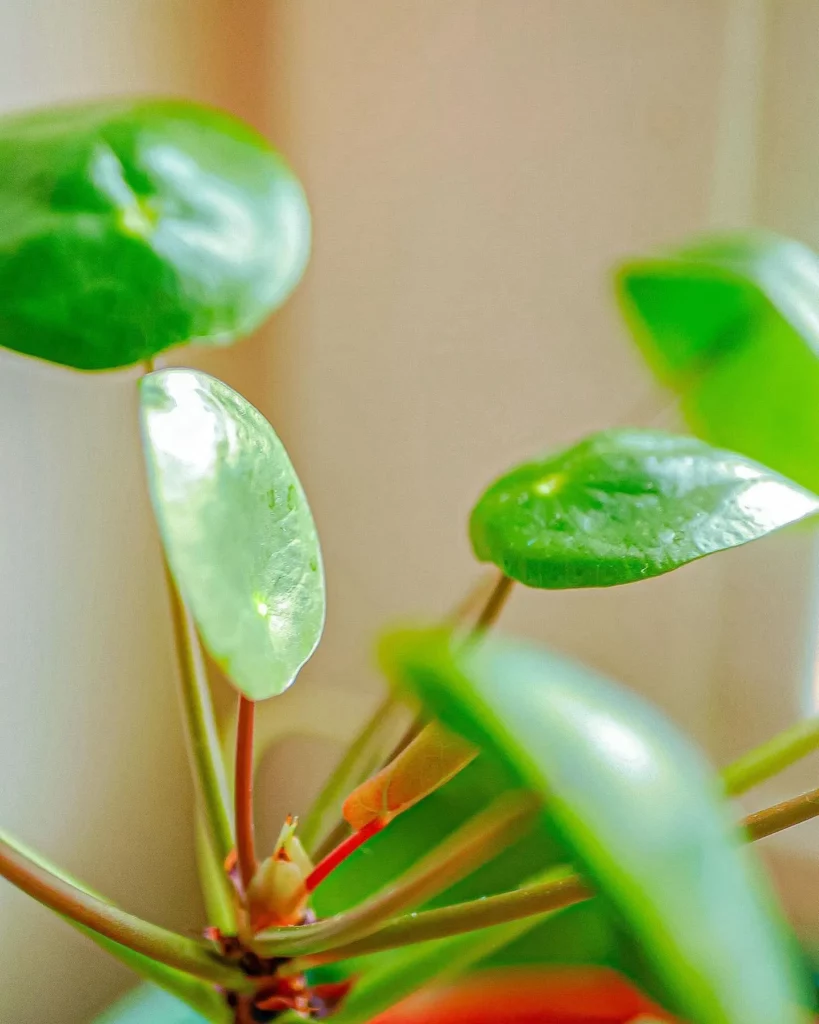
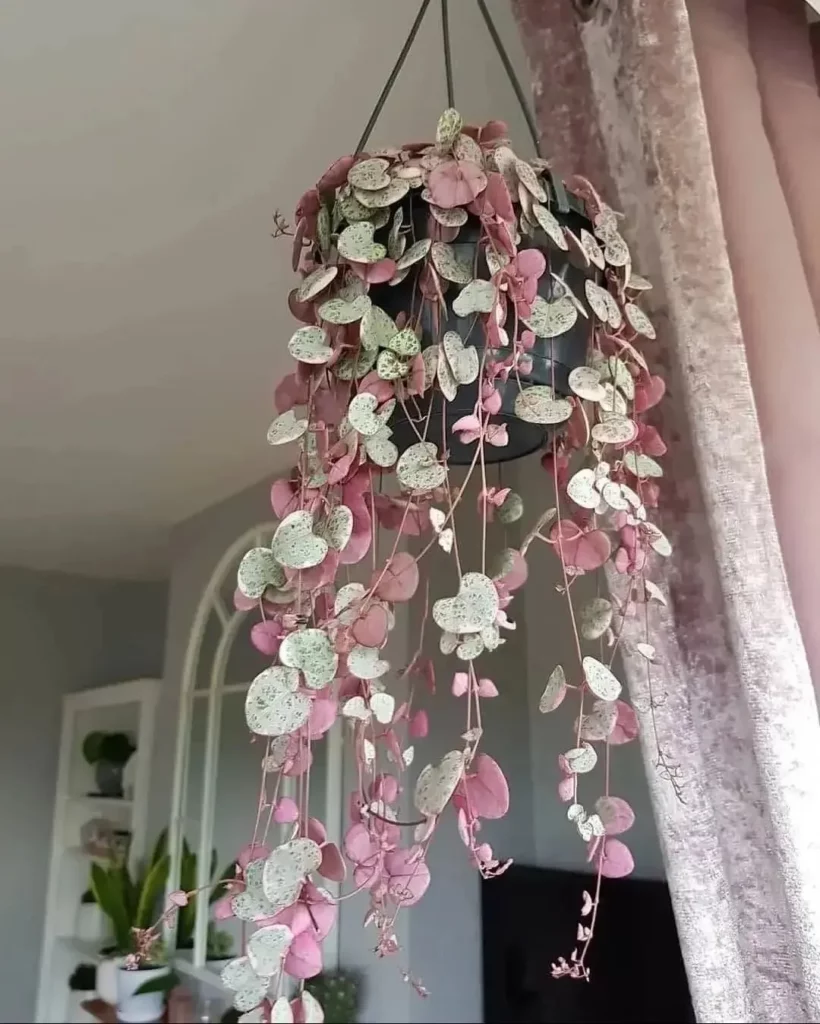
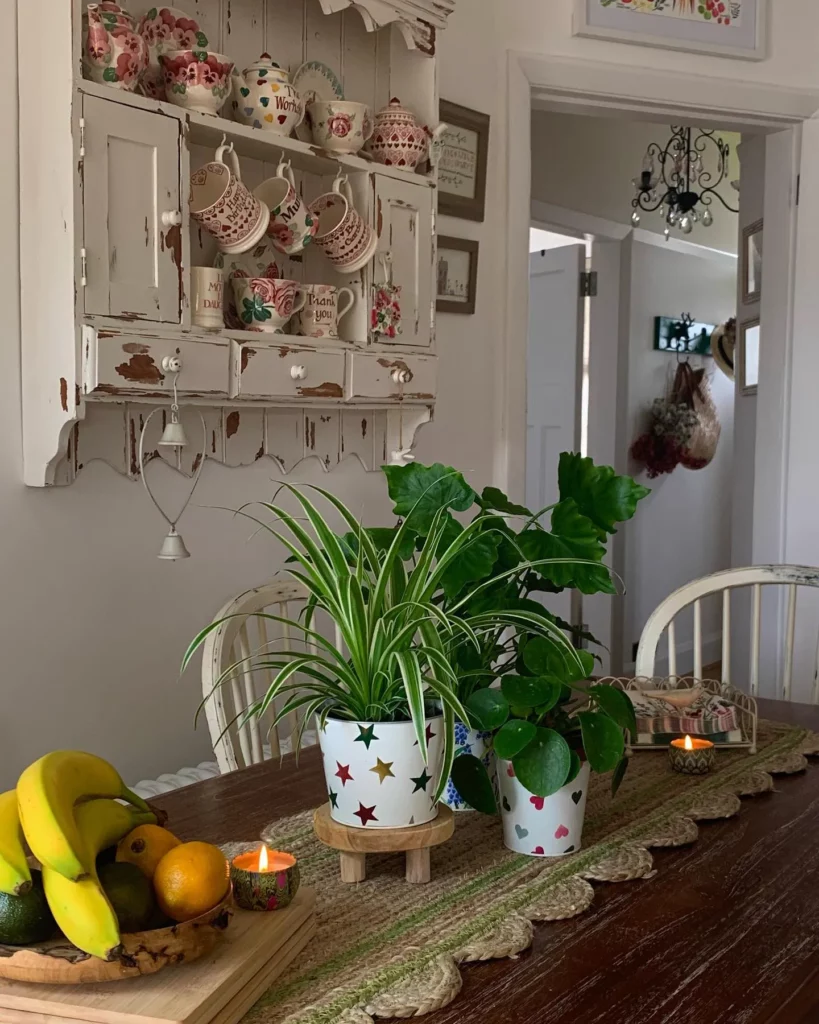
Proper watering is essential for the health and well-being of your Chinese Money Plant. By understanding its watering needs and following a few guidelines, you can help ensure the plant remains happy and thriving.
The Chinese Money Plant has moderate water requirements and should be allowed to dry out almost completely between waterings. This is because overwatering can lead to root rot and other fungal diseases. To determine when to water your plant, simply check the moisture level of the soil.
No products found.
It is recommended to water your Chinese Money Plant when the top inch of soil feels dry to the touch. Insert your finger into the soil and if it feels dry at that depth, it’s time to water the plant. Avoid the temptation to water the plant too often, as this can cause issues.
If you notice the leaves of your Chinese Money Plant starting to droop, it’s a sign that the plant needs water. While it’s important to provide adequate moisture, it’s crucial to strike the right balance. It is better to underwater the plant than overwater it to prevent water-related issues.
Tips for Watering Chinese Money Plant
- Allow the top inch of soil to dry out before watering.
- Use your finger to check the moisture level of the soil.
- Avoid overwatering to prevent root rot.
- Ensure proper drainage to prevent waterlogged soil.
- Water the plant thoroughly, allowing excess water to drain out.
Watering Frequency
Here’s a rough guideline for watering frequency based on the season:
| Season | Watering Frequency |
|---|---|
| Spring and Summer | Water when the top inch of soil is dry |
| Fall and Winter | Water sparingly, allowing the plant to rest |
Fertilizing Chinese Money Plant

Fertilizing your Chinese Money Plant is an essential part of its care routine, ensuring that it receives the necessary nutrients for healthy growth. By following these fertilization tips, you can help your plant thrive and maintain its lush appearance.
During the spring and summer months, when the Chinese Money Plant is actively growing, it benefits from regular fertilization. Choose a well-balanced, all-purpose fertilizer that contains essential nutrients such as nitrogen, phosphorus, and potassium. Read the instructions on the product packaging for the recommended application rates.
Fertilize your Chinese Money Plant once a month to provide a consistent supply of nutrients. This will support its overall health and promote robust growth. However, it’s important to remember that during the fall and winter months, the plant goes into dormancy. During this period, you should avoid fertilizing as the plant’s nutrient requirements decrease.
No products found.
When applying fertilizer, it’s crucial to do so in moderation. Overfertilization can cause leaf burn and may harm your plant. Follow the recommended dosage and avoid applying more fertilizer than necessary. Always err on the side of caution to prevent any potential damage to your Chinese Money Plant.
| Fertilizer Type | Application Rate | Frequency |
|---|---|---|
| All-Purpose Fertilizer | As instructed on the packaging | Once a month during spring and summer |
Potting Chinese Money Plant
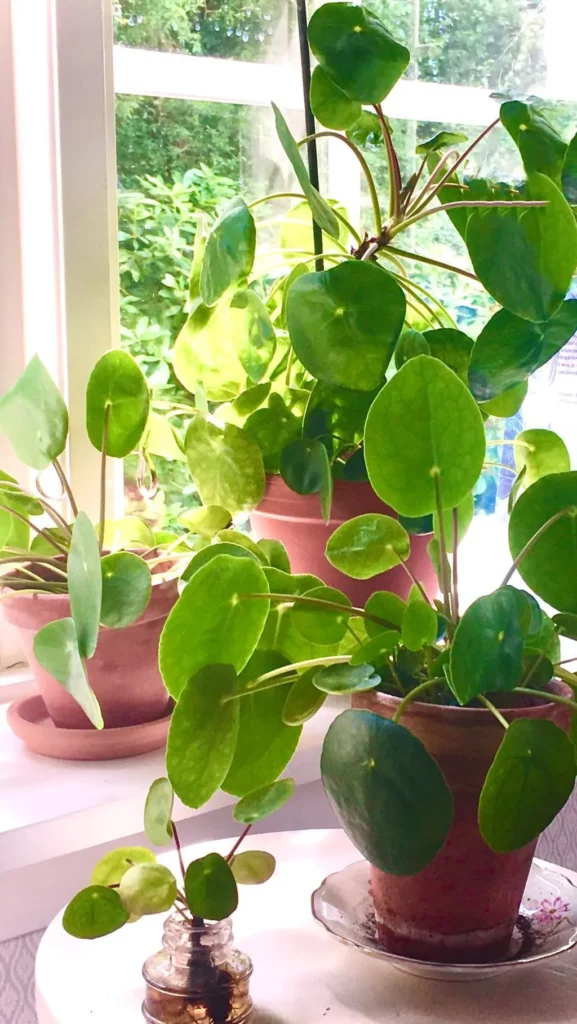
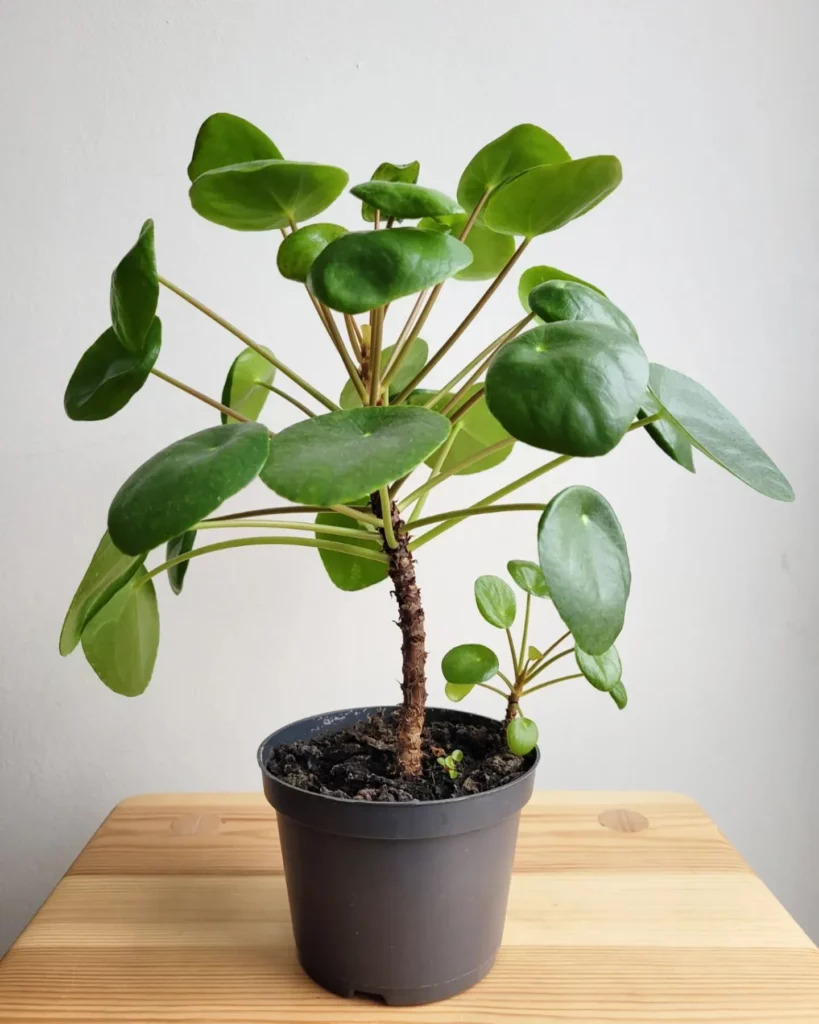
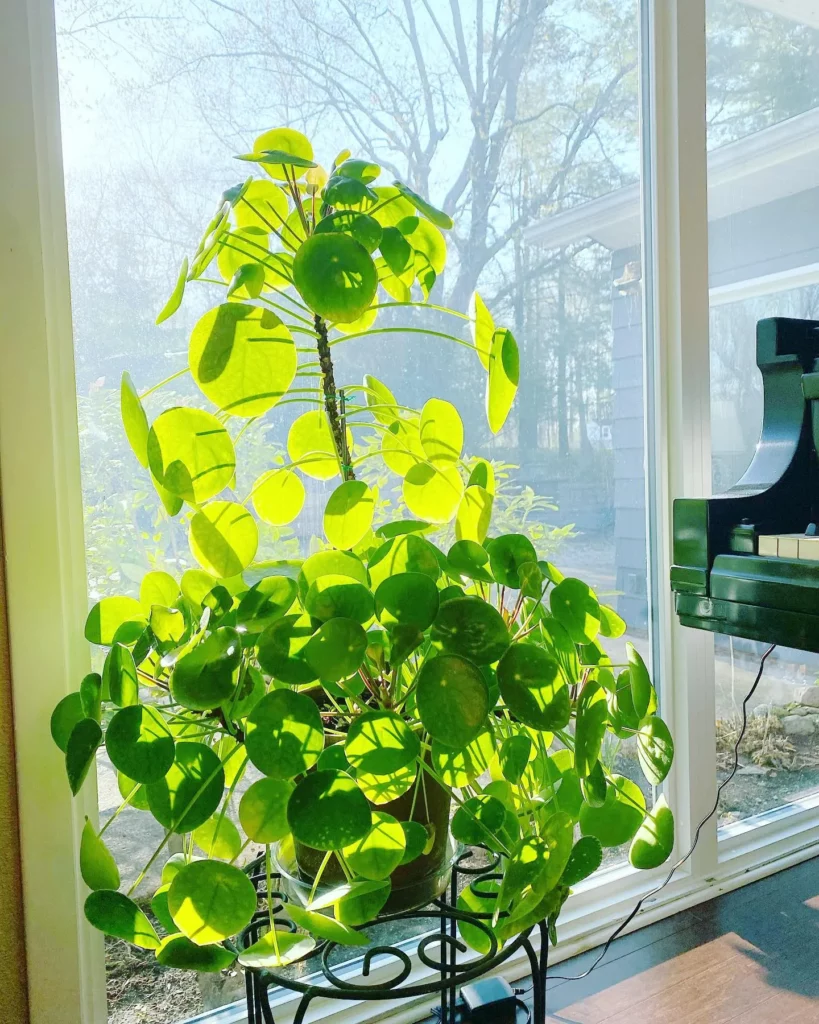
To ensure the healthy growth of your Chinese money plant, proper potting is essential. Here are some tips to pot your Chinese money plant successfully:
- Choose a pot with good drainage to prevent waterlogging. This will help prevent root rot and other water-related issues that can harm your plant.
- Opt for a high-quality organic potting mix that is rich and well-draining. This will provide the necessary nutrients for your plant’s growth and ensure proper moisture retention.
- Add perlite to the soil mixture to improve drainage and prevent soil compaction. This will create a well-aerated environment for the roots.
- Select a pot that allows room for the plant to grow and develop its roots. A slightly larger pot will accommodate the plant’s expanding root system.
- Repot the Chinese money plant every year in early spring or summer. This will provide fresh soil and promote healthy growth.
No products found.
When repotting, gently remove the plant from its current pot, being careful not to damage the roots. Place the plant in the new pot, ensuring it is centered and at the same depth as before. Fill the remaining space with the potting mix, pressing it gently around the roots. Finally, water the plant thoroughly and place it in its preferred spot with bright indirect light.
| Potting Chinese Money Plant Tips | |
|---|---|
| Choose a pot with good drainage | Prevents waterlogging and root rot |
| Use high-quality organic potting mix | Provides essential nutrients and proper moisture retention |
| Add perlite to improve drainage and prevent soil compaction | Creates a well-aerated environment for the roots |
| Select a pot with room for growth | Allows the plant to develop its roots and expand |
| Repot every year in early spring or summer | Provides fresh soil and promotes healthy growth |
Propagation of Chinese Money Plant

Chinese money plant is a resilient plant that can easily be propagated, allowing you to expand your collection or share it with others. The plant produces offshoots from its root system and nodes along the stem, making propagation a straightforward process.
To propagate a Chinese money plant, look for offshoots that are a few inches tall and separate them from the mother plant. Use a clean sharp knife or pruning shears to cut the main root about an inch or two below the soil level. This will help ensure the offshoot can develop a healthy root system.
Place the cutting in a separate container with damp soil. Make sure the soil is well-draining and maintain a consistently moist environment to promote root development. You can cover the container with a plastic bag or use a propagator to create a humid environment.
Keep the newly potted cutting in a location with bright indirect light and maintain a temperature between 60-75°F (15-24°C). It’s important to avoid direct sunlight during the rooting process as it can cause stress or damage to the cutting.
After a few weeks, the cutting will start developing roots. You can gently tug on the cutting to check for resistance, which indicates root growth. Once the roots are established, you can gradually acclimate the new plant to its regular care routine, such as watering and fertilizing.
Growth and Development of Chinese Money Plant
The Chinese money plant is a slow-growing plant indoors, but with proper care and optimal growing conditions, it can reach its full size and develop a bushy appearance. This popular houseplant can grow up to 12 inches in height and 12 inches in width, adding a touch of greenery and prosperity to your indoor space.
Let’s take a look at the key factors that contribute to the growth and development of the Chinese money plant:
- Fertilization: Regular fertilization is essential for the healthy growth of the Chinese money plant. Use a well-balanced, all-purpose fertilizer during the spring and summer months. Follow the instructions on the product packaging for proper application rates. Fertilize the plant once a month to provide it with the necessary nutrients for optimal development.
- Adequate Lighting: The Chinese money plant thrives in bright indirect light. Place it in a spot that receives plenty of natural light, but avoid direct sunlight as it can scorch the leaves. Rotating the plant regularly will ensure even light exposure and prevent lopsided growth.
- Proper Watering: The Chinese money plant has moderate water requirements. It’s important to allow the top inch of soil to dry out between waterings. Overwatering can lead to root rot, while underwatering can cause the leaves to droop. Finding the right balance is crucial for the plant’s development.
| Growth Factors | Tips for Optimal Development |
|---|---|
| Fertilization | Regularly fertilize with an all-purpose fertilizer during the spring and summer months. Follow the instructions on the product packaging for proper application rates. |
| Lighting | Place the Chinese money plant in a spot with bright indirect light. Rotate the plant regularly to ensure even light exposure. |
| Watering | Allow the top inch of soil to dry out between waterings. Avoid overwatering to prevent root rot and underwatering to avoid drooping leaves. |
Pests and Diseases of Chinese Money Plant
While Chinese money plants are generally resistant to pests and diseases, it’s important to be aware of common houseplant pests that can affect their health. Regular inspection of your plants will help you detect any early signs of infestation. Here are some common pests that may target your Chinese money plant:
- Aphids: These small, soft-bodied insects can cluster on the leaves and suck the sap from the plant, causing stunted growth.
- Mealybugs: These cotton-like pests can hide in leaf axils and feed on the plant sap, causing yellowing and leaf drop.
- Scale insects: These small, oval insects can attach themselves to stems and leaves, causing yellowing and weakening of the plant.
- Fungus gnats: These small black flies lay their eggs in the moist soil, and their larvae can damage the roots and stunt the growth of the plant.
- Spider mites: These tiny pests can spin webs and feed on the plant’s sap, causing yellow spots and webbing on the leaves.
To treat these pests, you can use organic methods such as:
- Applying insecticidal soap: A solution of mild liquid soap and water can be sprayed on the affected parts of the plant to suffocate and kill the pests.
- Using neem oil: Neem oil is a natural insecticide and fungicide that can be sprayed on the plant to control pests and diseases. Make sure to follow the instructions on the product label.
Preventing pest and disease issues can be achieved through proper plant care:
- Provide adequate ventilation for the plant by keeping it in a well-ventilated area.
- Follow proper watering practices, allowing the soil to dry out between waterings to prevent fungal growth.
- Maintain good hygiene by keeping the plant clean and removing any fallen leaves or debris that may attract pests.
Common Pests and Diseases of Chinese Money Plant
| Pest or Disease | Description | Treatment |
|---|---|---|
| Aphids | Small, soft-bodied insects that cluster on the leaves and suck the sap from the plant | Apply insecticidal soap or neem oil |
| Mealybugs | Cotton-like pests that hide in leaf axils and feed on the plant sap | Apply insecticidal soap or neem oil |
| Scale insects | Small, oval insects that attach themselves to stems and leaves | Apply insecticidal soap or neem oil |
| Fungus gnats | Small black flies that lay their eggs in moist soil, damaging the roots | Avoid overwatering and use sticky traps to catch adult gnats |
| Spider mites | Tiny pests that spin webs and feed on the plant’s sap | Wipe leaves with a damp cloth or apply insecticidal soap |
No products found.
Other Common Types of Money Plant
Aside from the Chinese money plant, there are several other common types of money plants that you might be interested in. These plants have their own unique characteristics and can be grown for their aesthetic appeal and symbolic significance. Here are some popular varieties:
Jade Plant (Crassula ovata)
The Jade Plant is a succulent with thick, fleshy leaves that are a vibrant green color. It is believed to bring good luck and wealth according to Feng Shui. Jade Plants are relatively easy to care for and can thrive in both indoor and outdoor environments.
Money Tree (Pachira aquatica)
The Money Tree is a popular plant often associated with good luck and financial prosperity. It has large, hand-shaped leaves and a thick, braided trunk. Money Trees are known for their resilience and can tolerate various light conditions.
Golden Pothos (Epipremnum aureum)
The Golden Pothos is a trailing vine that features heart-shaped leaves with variegated patterns of green and yellow. It is a versatile and low-maintenance plant, making it ideal for beginners. Golden Pothos is known to purify the air and bring positive energy into a space.
Swiss Cheese Plant (Monstera deliciosa)
The Swiss Cheese Plant is named for its unique leaves that have large, oval-shaped holes, giving them a distinctive appearance. It is a popular choice for interior design due to its tropical vibe. Swiss Cheese Plants can grow quite large, making them a statement piece in any room.
Silver Satin (Scindapsus pictus)
The Silver Satin is a trailing vine with elongated heart-shaped leaves that are silvery-green in color. It is known for its velvety texture, which adds a touch of elegance to any space. Silver Satin is a relatively low-maintenance plant that can thrive in a variety of light conditions.
Silver Dollar Vine (Xerosicyos danguyi)
The Silver Dollar Vine is an interesting succulent that has round, silver-gray leaves resembling large coins. It is a drought-tolerant plant that stores water in its leaves, making it suitable for arid environments. Silver Dollar Vine is a unique addition to any succulent collection.
Lucky Bamboo (Dracaena sanderiana)
Lucky Bamboo is not actually a bamboo plant but a member of the Dracaena family. It is a popular plant often gifted for good luck and prosperity. It features long, slender stalks that can be arranged in various shapes and arrangements. Lucky Bamboo is easy to care for and can grow in both soil and water.
These are just a few examples of the common types of money plants that you can consider adding to your collection. Each plant has its own charm and can bring a touch of nature’s wealth into your home or office.
Where to Buy Chinese Money Plant
Chinese money plant, also known as Pilea peperomioides, can be a bit difficult to find in local nurseries and garden centers. However, you can easily purchase this delightful plant online from various sellers on well-known platforms like Amazon, eBay, Etsy, and Craigslist. When buying online, make sure to choose credible and reputable sellers to ensure you receive a healthy plant. Additionally, reading reviews from other buyers can provide valuable insights and help you make an informed decision.
Alternatively, if you have a friend who already owns a Chinese money plant, you can try obtaining a start from them. The plant is easy to propagate and share with others through offshoots or cuttings. Sharing plants among enthusiasts is a common practice and can be a cost-effective way to expand your plant collection while maintaining a sense of community.
To get started, simply contact your local plant-loving friends and inquire if they have any Chinese money plant offshoots or cuttings available. This not only allows you to acquire a beautiful plant but also adds a personal touch to your collection as it comes from someone you know.
Conclusion
Chinese money plant is a stunning addition to any indoor space, bringing both beauty and prosperity to your home. With its unique coin-shaped leaves and symbolic association with wealth, this plant has captured the hearts of many plant enthusiasts. By providing the right care, including proper lighting, watering, fertilizing, and potting, you can ensure the healthy growth and development of your Chinese money plant. Regular propagation and sharing of offshoots not only enhance the plant’s significance but also provide an opportunity to spread abundance and prosperity to your loved ones.
Remember to place your Chinese money plant in a spot with bright indirect light to maintain its symmetrical appearance. Water the plant only when the top inch of soil feels dry, and fertilize it monthly during the growing season for optimal growth. Choosing a well-draining potting mix and repotting the plant annually will help keep it healthy and thriving.
Whether you’re a seasoned plant collector or just starting your indoor garden, the Chinese money plant is a must-have. Its charm, ease of care, and symbolic meaning make it a true gem. Embrace this plant in your home, and let its presence bring you prosperity and joy.
FAQ
What is the Chinese Money Plant?
The Chinese Money Plant, also known as Pilea peperomioides, is a low-maintenance plant with distinct coin-shaped leaves that is believed to bring wealth and abundance according to Feng Shui.
How does the Chinese Money Plant look?
The Chinese Money Plant has flat, coin-shaped leaves that are bright green in color. The leaves grow on long stems and give the plant a unique and attractive appearance. It has a bushy growth habit, with leaves arranged in a circular pattern, resembling a pile of coins.
What kind of light does the Chinese Money Plant need?
The Chinese Money Plant thrives in bright indirect light. It should be placed in a spot that receives plenty of natural light but is protected from direct sunlight, as this can scorch its leaves.
How often should I water the Chinese Money Plant?
The Chinese Money Plant has moderate water requirements and should be allowed to dry out almost completely between waterings. Water the plant when the top inch of soil feels dry to the touch.
How do I fertilize the Chinese Money Plant?
The Chinese Money Plant benefits from regular fertilization during the spring and summer months. Use a well-balanced, all-purpose fertilizer and follow the instructions on the product packaging for application rates. Fertilize the plant once a month.
What kind of soil should I use for potting the Chinese Money Plant?
The Chinese Money Plant should be planted in a pot with good drainage using a high-quality organic potting mix that is rich and well-draining. Adding perlite to the soil mixture can improve drainage and prevent soil compaction.
How do I propagate the Chinese Money Plant?
The Chinese Money Plant can be easily propagated by detaching offshoots from the mother plant and potting them separately. Cut the main root about an inch or two below the soil and place the cutting in a separate container with damp soil.
How does the Chinese Money Plant grow and develop?
The Chinese Money Plant is a slow-growing plant indoors. With proper care and optimal growing conditions, it can grow up to 12 inches in height and 12 inches in width. Regular fertilization, adequate lighting, and proper watering are essential for healthy growth and development.
Is the Chinese Money Plant prone to pests and diseases?
While the Chinese Money Plant is generally resistant to pests and diseases, it can be susceptible to common houseplant pests such as aphids, mealybugs, scale insects, fungus gnats, and spider mites. Regular inspection and appropriate treatment methods are important to prevent and address infestations.
What are other common types of money plants?
Some other common types of money plants include Jade Plant, Money Tree, Golden Pothos, Swiss Cheese Plant, Silver Satin, Silver Dollar Vine, and Lucky Bamboo.
Where can I buy the Chinese Money Plant?
The Chinese Money Plant can be purchased online from various sellers on platforms like Amazon, eBay, Etsy, and Craigslist. Ensure to buy from reputable sellers and choose healthy plants. Alternatively, you can try to obtain a start from a friend who already has a Chinese Money Plant and is willing to share offshoots or cuttings.





